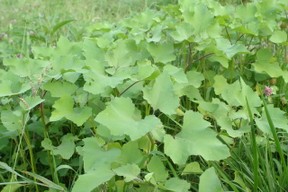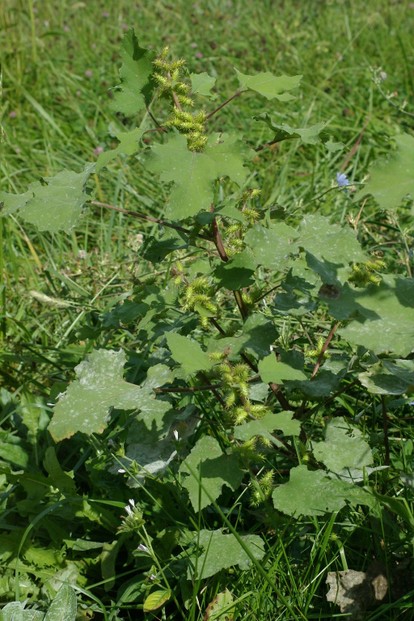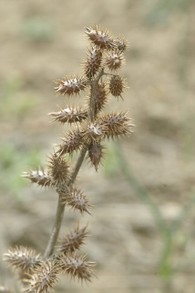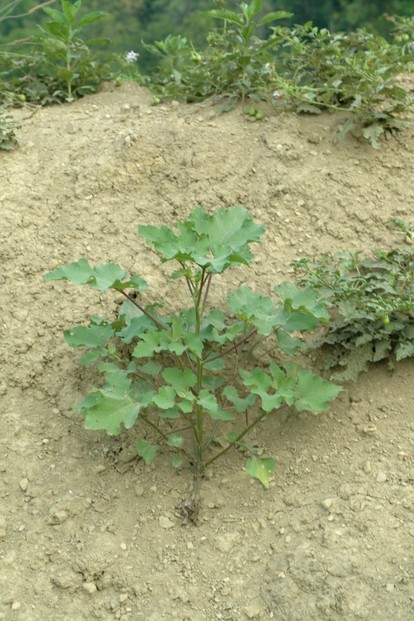The common cocklebur (Xanthium strumarium) is one of several weed species that have prickly bur seed pods. When humans or mammals pass by, the burs attach themselves to clothing and fur. When the bur is picked or brushed off, the seeds can sprout in a new area.
Cockleburs can be found in all the contiguous states in the U.S. This weed can grow in most soil types and in most environments. It often sprouts up when ground is disturbed - its seeds can grow even after being buried in the ground for over a decade!
Farmers, gardeners and ranchers all want to get rid of this weed. Besides taking over crops, the young plants have been known to poison livestock.
This photo is of a cocklebur plant with dried seed pods. ~~ photo by Angela Johnson


 Cocklebur plants (Xanthium strumarium) is a noxious weed in North America. Cockleburs usually grow two to four feet tall and can spread rapidly. Besides that, the plant is toxic to animals.
Cocklebur plants (Xanthium strumarium) is a noxious weed in North America. Cockleburs usually grow two to four feet tall and can spread rapidly. Besides that, the plant is toxic to animals.









 If you learn to identify the cocklebur plant, you can get rid of it before it grows too tall and produces seed burs. It's a good idea to walk through your fields early in the spring to look for the plants.
If you learn to identify the cocklebur plant, you can get rid of it before it grows too tall and produces seed burs. It's a good idea to walk through your fields early in the spring to look for the plants.

 I Loved to Read in Grade School (in the 1960s)on 09/29/2018
I Loved to Read in Grade School (in the 1960s)on 09/29/2018
 Halloween Memories from the 1960son 09/17/2018
Halloween Memories from the 1960son 09/17/2018
 What on Earth is Earthing?on 06/03/2015
What on Earth is Earthing?on 06/03/2015
 Worm Manure (Castings) Is The Best Organic Fertilizeron 05/25/2015
Worm Manure (Castings) Is The Best Organic Fertilizeron 05/25/2015



Comments
These cocklebur plants were in my sister and brother-in-law's 10 acre hay field. I stayed with them several weeks in the spring three years ago and walked through the field many times pulling up the young plants. They don't mow their field because they let it grow wild to use for hay. This spring when I walked through the field when the weeds were short, I didn't see a single cocklebur plant growing.
This plant has naturalised in the Mediterranean, but not in Britain. We are free of it, thankfully.
AngelaJohnson, Thank you for the cocklebur and Velcro information. The arborist rule is that any combination of controlled burn, extreme cutting and non-organic/organic treatment eliminates pesty plants within 1-3 years. I find that severe cuts, mows, prunes and trims often work on their own.